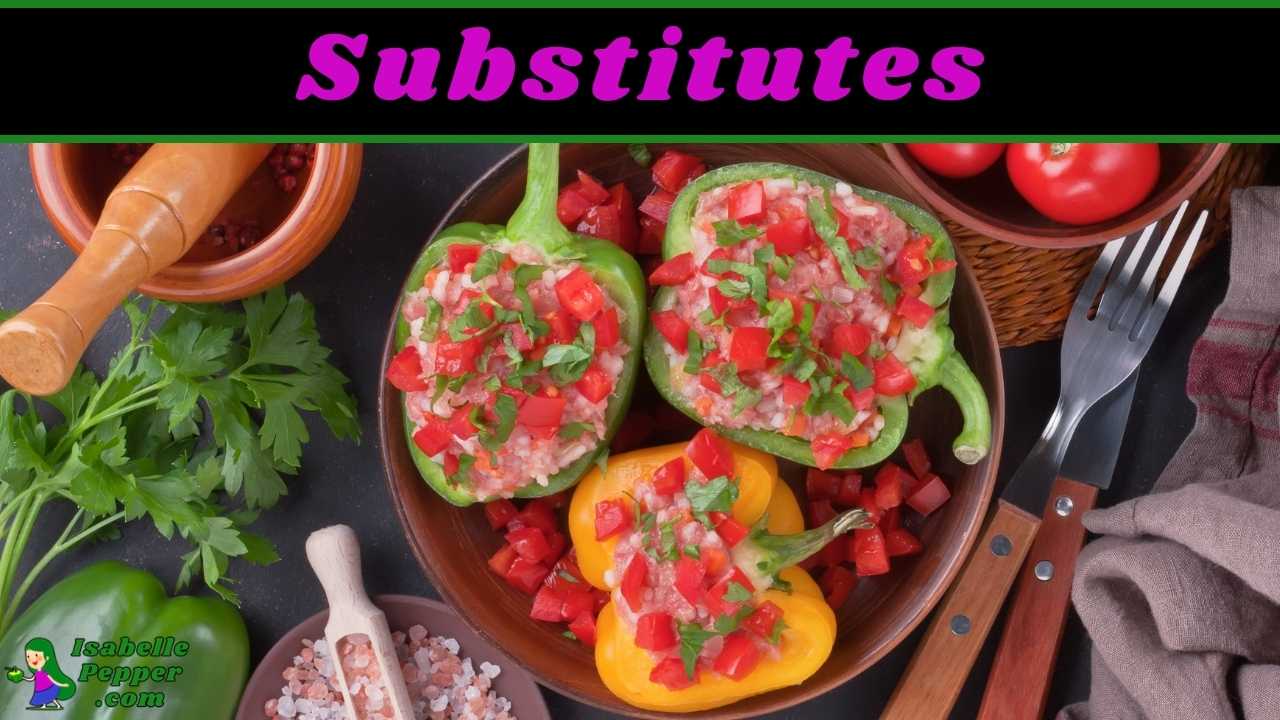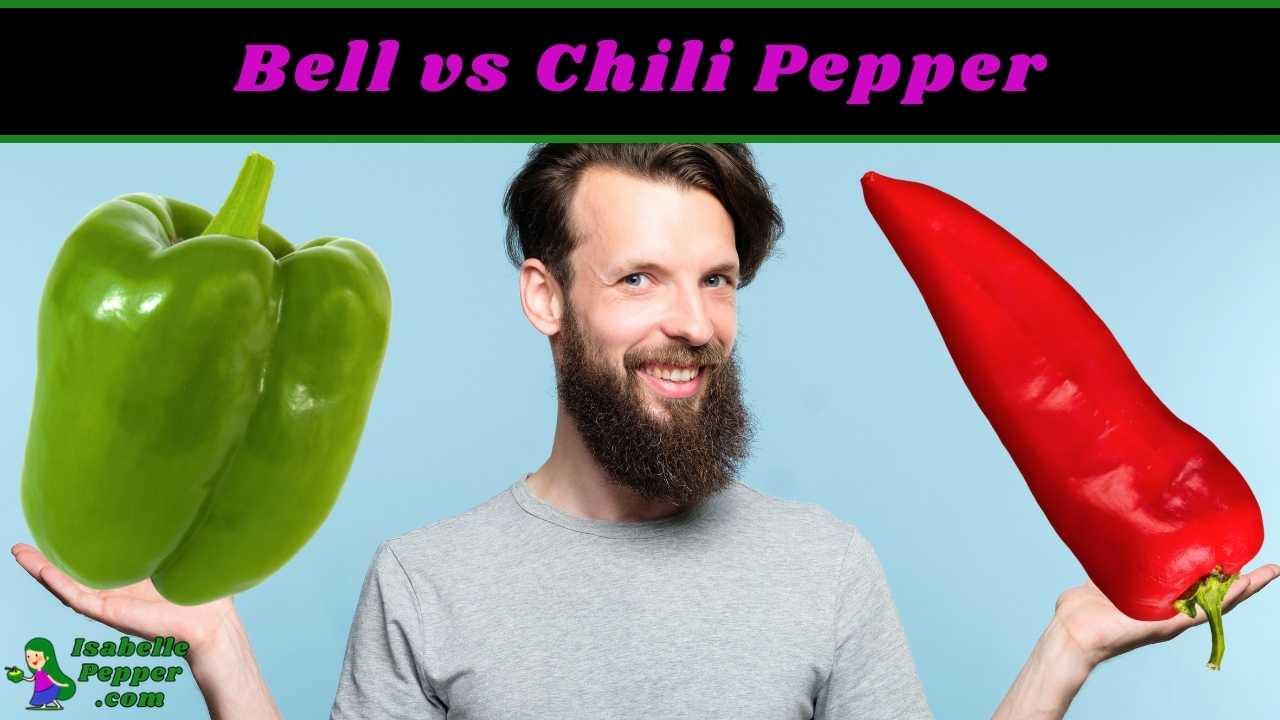From cute mini peppers that add charm to our dishes to the impressive giants that grab your attention, bell peppers come in a wide range of sizes.
The smallest bell pepper is only 5-7 centimeters while on the other side, the biggest one stretches over 7 inches.

What is the Average Sized Bell Pepper?
Bell pepper plants can vary greatly in size.
On average, the width of a bell pepper plant ranges from 18 to 24 inches, while the height spans from 1-5 feet.
The bell pepper itself typically measures around 3 to 4 inches in width and 3 to 5 inches in length. This standard size is often used as a benchmark for culinary measurements and recipes.
However, these measurements can differ based on growing conditions, care, and the specific type of bell pepper.
| Type of Bell Pepper | Plant Size | Pepper Size |
|---|---|---|
| Cajun Bell Peppers | 2-3 feet tall | 2-3 inches |
| Purple Bell Peppers | 18-24 inches tall | 3 inches |
| Bonnie Bell Peppers | 2-3 feet tall | 4-6 inches |
| Mini Bell Peppers | 1-2 feet tall | 1 inch |
| Homegrown Bell Peppers | 1-5 feet tall | 3-5 inches |
| Lady Bell Peppers | 2-3 feet tall | 3-4 inches |
| Blonde Bell Peppers | 1-2 feet tall | 3-5 inches |
| Big Birtha Bell Peppers | 4+ feet tall | 7 inches or more |
| Holland Bell Pepper | 1-2 feet tall | 5-7 centimeters |
If your bell peppers are smaller than shown on the chart, there may be an issue you need to address.
I wrote an article explaining the causes of small bell peppers and how to fix it, check it out here: Why are Homegrown bell peppers so small?
6 Different Types of Bell Peppers and How Big They Get
Bell peppers come in an exciting assortment of types, each showcasing its unique size and characteristics. Let’s take a closer look at some notable varieties:
- 1. Cajun Bell Peppers: Cajun bell pepper plants typically grow to around 2-3 feet tall while the Cajun bell pepper itself measures around 2 to 3 inches.
- 2. Purple Bell Peppers: Purple bell pepper plants generally reach a height of 18-24″ while the purple bell pepper itself typically measures around 3 inches.
- 3. Bonnie Bell Peppers: Bonnie bell pepper plants typically grow to a height of 2 to 3 feet while the Bonnie bell pepper, known for its larger size, commonly measures around 4-6 inches.
- 4. Mini Bell Peppers: Mini bell pepper plants usually have a compact size of around 1 to 2 feet and the mini bell pepper itself measures around 1 inch.
- 5. Homegrown Bell Peppers: The size of homegrown bell peppers can vary widely depending on growing conditions and care. On average, homegrown bell pepper plants grow to about 1-5 feet, while the bell peppers themselves grow to around 3-5 inches.
- 6. Lady Bell Peppers: Lady bell pepper plants grow to around 2-3 feet while the lady bell pepper itself measures about 3-4 inches.
- 7. Blonde Bell Peppers: Blonde bell pepper plants typically grow to 1-2 feet while the blonde bell pepper itself usually measures around 3 to 5 inches.
What is the Largest Bell Pepper Variety?
Among the diverse bell pepper varieties, some have been known to grow exceptionally large.
The largest bell pepper variety on record is the ‘Big Birtha,’.
The plant grows to an impressive size of 4+ feet while the bell pepper itself can grow to 7 inches or even longer.
Largest Pepper Pepper (World Record)
The record for the heaviest bell pepper was set by Ian Neale from Newport, Gwent, UK, on September 27, 2020.
The pepper weighed a remarkable 738 grams (equivalent to 1 pound and 10 ounces).
This achievement marked an improvement over Ian’s previous record of 720 grams (approximately 1 pound and 9 ounces), which had held since September 2018.
Notably, this impressive pepper was cultivated from seeds derived from his own earlier record-setting bell pepper.
What is the Smallest Bell Pepper Variety?
While bell peppers typically boast a substantial size, miniature versions also exist.
The smallest bell pepper variety is known as the ‘holland bell pepper’.
The plant grows to around 1-2 feet while the bell pepper itself is measures a mere 5-7 centimeters.
What Affects Bell Pepper Size?
Several factors influence the size of bell peppers:
- Growing Conditions: Adequate sunlight, water, and nutrient-rich soil contribute to healthier plants and larger peppers.
- Variety: Different bell pepper varieties have inherent growth patterns and potential sizes.
- Pruning and Thinning: Proper pruning and thinning of plants can redirect energy toward pepper growth.
- Pollination: Successful pollination is crucial for pepper development. Inadequate pollination can result in smaller peppers.
Conclusion
Bell peppers are remarkable vegetables that offer a captivating range of sizes, from petite mini peppers to impressive giants.
The smallest bell pepper is around 5-7 centimeters while the largest is 7+ inches. However, the average bell pepper size is about 3-5 inches.
Their size variations are influenced by factors such as variety, growing conditions, and care.




